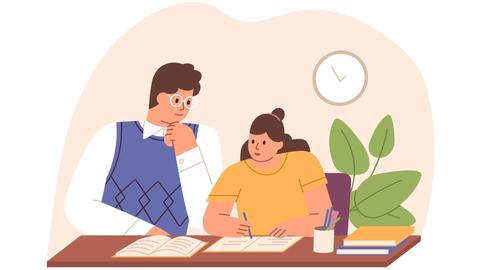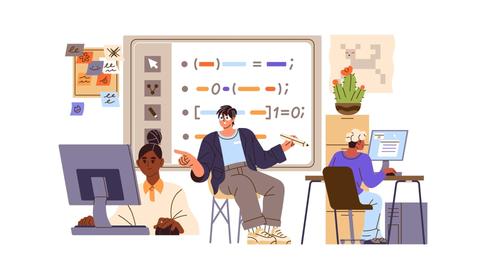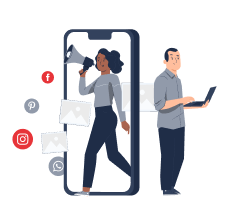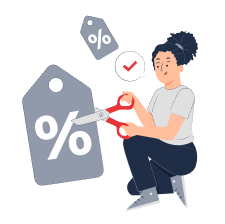What to look for to please a customer
There are two participants in the negotiations: you and your client. A skilled negotiator can influence the outcome of the negotiations by saying the right things and providing accurate facts, and by offering a good discount to the buyer, etc.

Nevertheless, you can't directly force the client to accept your offer (and if you can, this is no longer a negotiation). However, with skills and practice, it's within your power to win over the customer over by paying attention to their behaviour and reactions, and to change the mood of the meeting so that you reach a successful outcome. To help you achieve this, the following article lists some simple tips on how to gain the confidence of the interlocutor, and once you get started implementing these lifehacks your negotiations will become much easier.
Make a good first impression with your professional appearance

What you're wearing, how you stand, and even where your hands are during the negotiations - all this affects the impression you give to those you're negotiating with. This impression has an impact on the outcome of the negotiations. How you appear to the interlocutor and the impression you give to them indicates whether or not they'll see you as a confident person, and a reliable potential partner who not only wants to not only make a deal and earn money, but someone who'll also solve the their problem. On the flip side, a bad impression means that you'll either be instantly forgettable, or they won't want to do business with you at all.
So, do you make yourself look good in order to attract the interlocutor's attention?
Formal business attire for men
Men in a formal workplace are typically expected to wear a dark, or neutral-coloured suit with a tie and dress shoes:
- Dark or neutral-coloured plain suit or pinstripe suit
- White or light-coloured collared shirt
- Conservative tie
- Cufflinks
- Leather belt
- Dress shoes and plain socks
Formal business attire for women
Women's formal business attire usually involves wearing a conservative suit with a plain collared shirt or blouse and smart shoes:
- Dark or neutral-coloured suit
- White or light-coloured collared shirt or blouse
- Skirt at knee length or pants
- Leggings or tights
- Black or neutral-coloured closed-toe smart shoes
Monitor customer behaviour

Here, the rules are universal for both women and men. Meta-communicative non-verbal signals can tell you more about the customer's thoughts and mood just their words do. To be able to pick up and read these signals, and use them to your advantage correctly, requires some training; but their use will help you manage the negotiations and win the client round.
Communication between the two sides begins with a social distance (2‒3 metres). If the client maintains this distance or tries to increase it, rather than reduce it, then the negotiations aren't likely to end favourably for you. If, on the other hand, the distance between you both has decreased, on the contrary, the client has emotionally 'accepted' you and is committing to you.
Oddly enough, laughter is the best way to build rapport, so don't be afraid to smile and laugh. One caveat, however, don't overdo it: your goal with humour is simply to break the ice and create a favourable impression, and no more. After all, ultimately, you're both there to conduct serious negotiations.
Identify the leader of the negotiations. If there are several interlocutors, then most likely the leader will sit in the centre. Usually, on the right the member of their team that provides their 'rational support' sits, and to their left the person facilitates the leader's 'emotional support.' Depending on which argument you want to use - appealing to either heart (emotions) or head (reason)- look at the relevant participant in the negotiations, and when ending your speech, look directly at the leader. In this way, you show that you're all ears - that you're giving your full attention to the interlocutor - and, that you're giving the floor to them.
Pay close attention to the pose of the interlocutor. Body language could be either open or closed. Closed poses are not just crossed arms or legs, but also any object in the hands (a sheet of paper, a pen, a phone). All this indicates the interlocutor's desire to distance themselves from conversation. However, bear in mind that if your conversation partner is toying with an object with their fingers, then the interlocutor is mulling something over. And remember, a closed posture isn't static, but rather appears as a reaction to some particular words during the conversation. Therefore, keep track of after which words your client's body position changes.
Client gestures also say a lot about their mood. For instance, if the client touches any part of the face, this means that they are finding the conversation unpleasant. If the interlocutor, after a successful argument that breaks your arguments, begins to stroke the table, a book, or any other item, be careful: then your opponent is either anticipating their final victory in the negotiations, or is preparing to deliver the killer blow. Therefore, change the direction of the conversation, remember the secondary factors, focus on the details - the opponent's strategy will be destroyed, and you'll have bought yourself the time to regroup and gather your thoughts.
When the interlocutor touches one of their hands with the other, or touches their head or chest, then they wants to calm down, and to keep the situation under control. At such moments, the interlocutor is feeling insecure and anxious. This, then, is the time to pounce and crank up the pressure on them. Nevertheless, don't do this aggressively, but, for example, using your strongest argument.
If the interlocutor taps with something - with their hand, with an object in their hands, or with their foot on the floor - this is a sign that they have grown impatient and want to increase the pace of the process in order to reach an outcome. In this state, they will pay less attention to your words. Consequently, to hold their attention and get them to refocus - ask clarifying questions, make them speak, and use strategies to distract from the client from counting down time until the end of the meeting. In any case, such signals, as well as a change in the position of the body, the use of the table as supports, indicate that it is time to end the negotiations.
What's the result?

The article presents ways to influence the mood of the client in the negotiations, and accordingly, on their outcome. It's not necessary to use them all at once: at first it will be difficult to remember how touching the head differs from touching the nose or ear, and there's a chance to get confused in the interpretation of the interlocutor's behaviour. So, as we've said before, to be good at reading body language you are going to have to hone your skills and practice. Gradually memorise the meaning of non-verbal signals and pay attention to your own appearance and behaviour - this will help you to emerge victorious from any negotiations.
Share this with your friends via:
Latest News

A significant stage in the development of the alternative education system has begun in West Northamptonshire in the UK: the County Council is actively calling on parents, guardians, and trustees to participate in shaping the future of this key area.

Outwoods Primary School in Atherstone, Warwickshire, having experienced deep sadness after the loss of their famous cat, Silla, has found solace in a new pet – a Maine Coon named Aloysius O’Hara.

In modern universities, artificial intelligence, and in particular ChatGPT, is rapidly transforming from a controversial tool into a full-fledged student assistant.

An innovative educational project is gaining momentum in UK primary schools, aiming to change attitudes towards video games.

The Massachusetts Institute of Technology (MIT) presents MIT Learn – a revolutionary online platform that opens a “new front door” to access university knowledge and resources.












 Test. How Should You Spend the Winter Holidays?
Test. How Should You Spend the Winter Holidays?
 How the Christmas Tree Became the Symbol of the New Year: From Pagan Groves to Sparkling Ornaments
How the Christmas Tree Became the Symbol of the New Year: From Pagan Groves to Sparkling Ornaments
 How to Keep New Year’s Resolutions: A Detailed Guide to Real Change
How to Keep New Year’s Resolutions: A Detailed Guide to Real Change
 Test. What Winter Dessert Are You?
Test. What Winter Dessert Are You?
 Test: What Kind of Ancient Goddess Are You?
Test: What Kind of Ancient Goddess Are You?
 Test: Which Great Woman Would Invite You for Tea?
Test: Which Great Woman Would Invite You for Tea?
